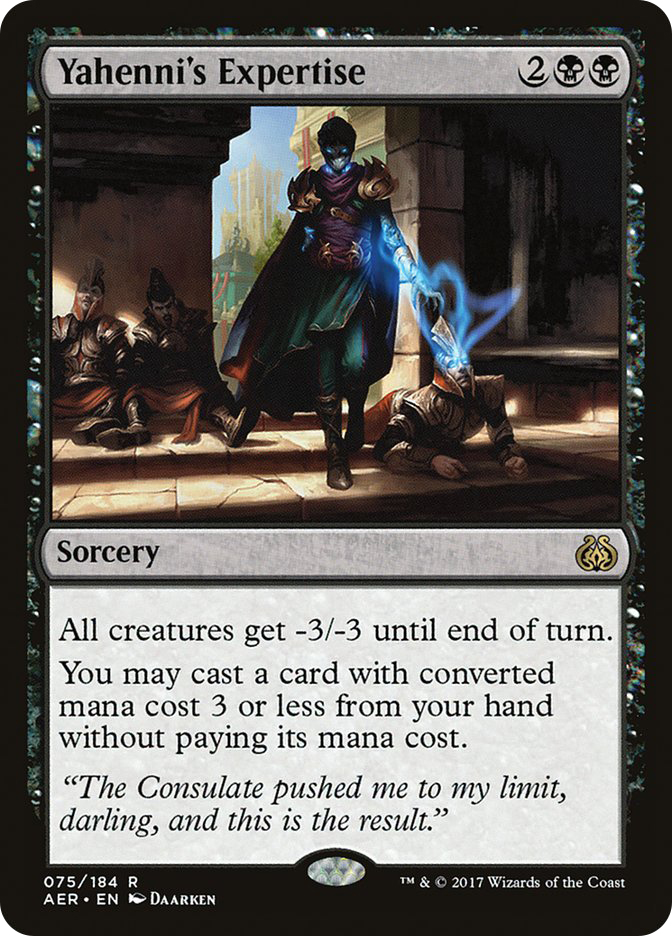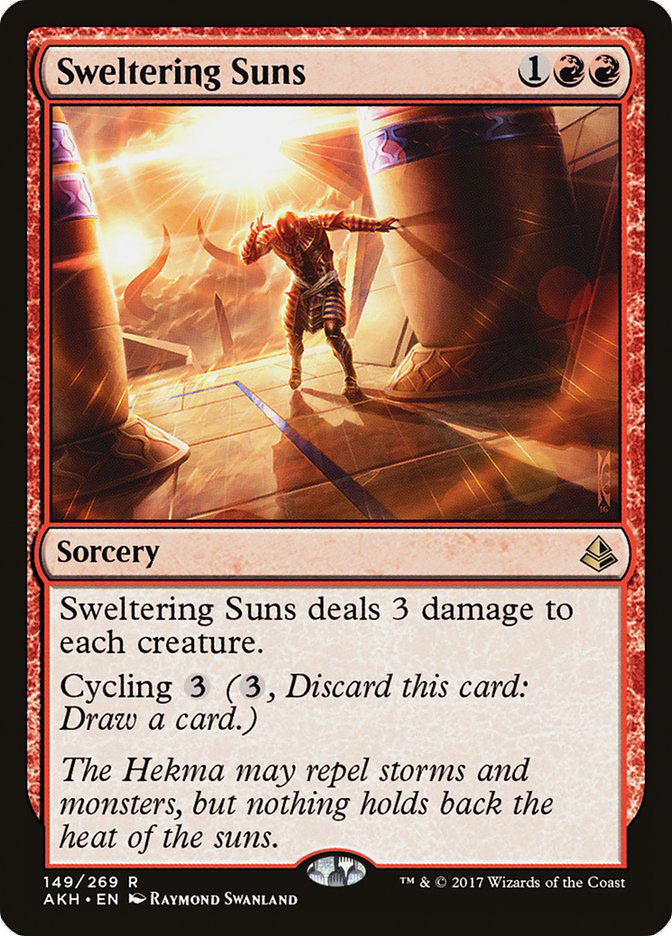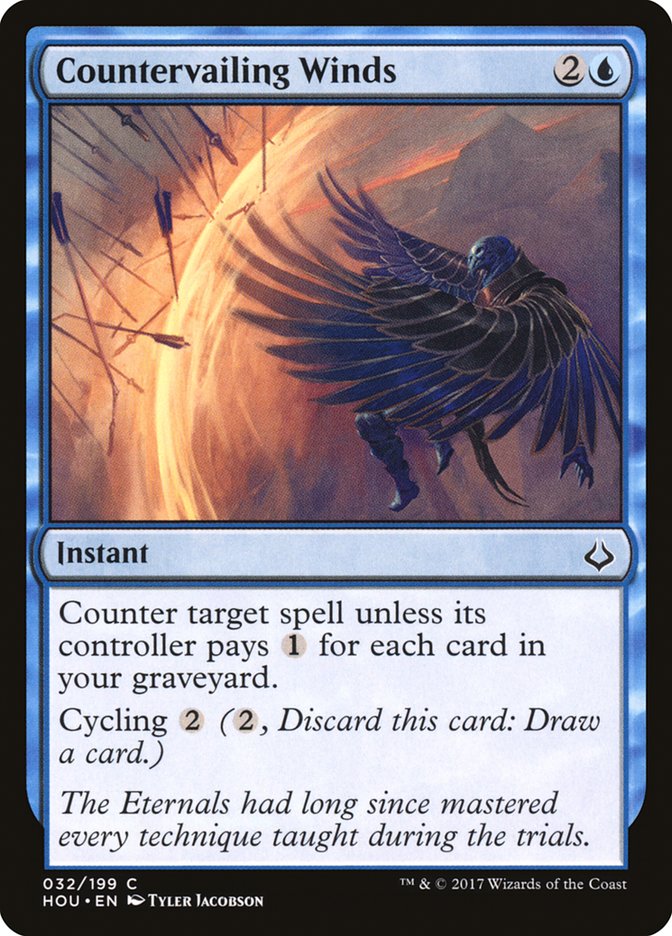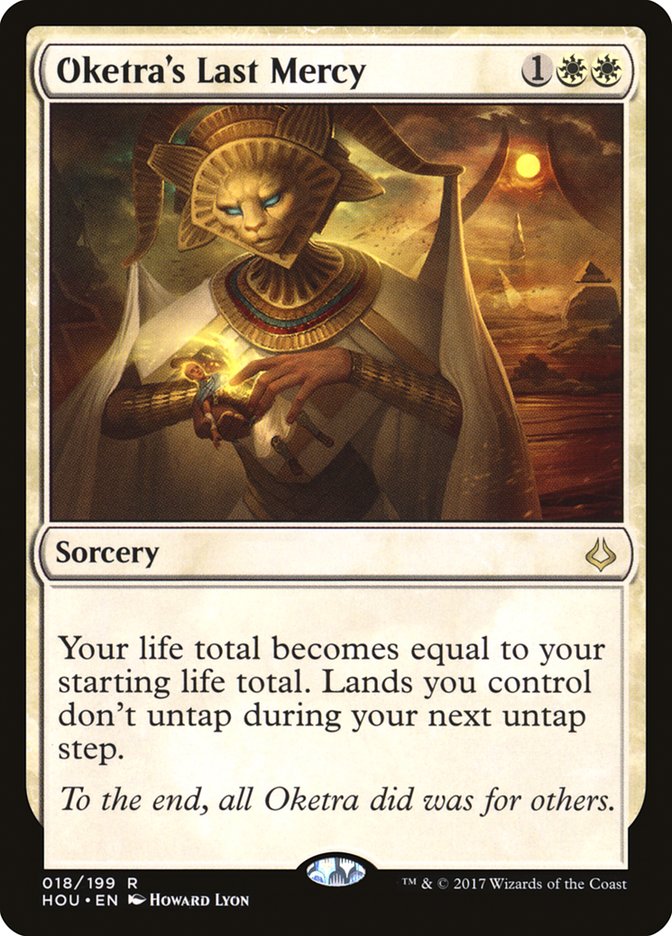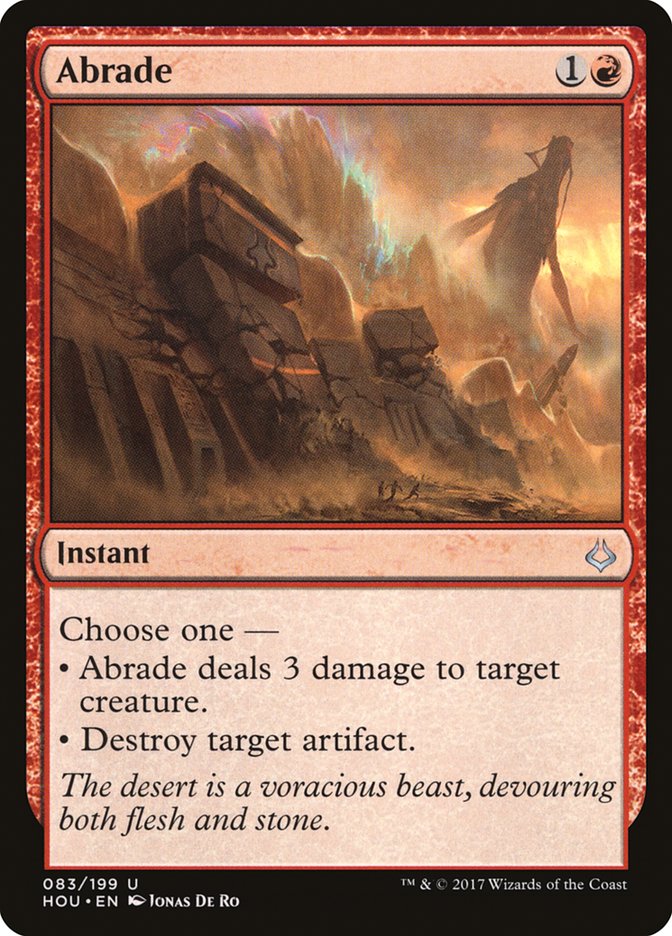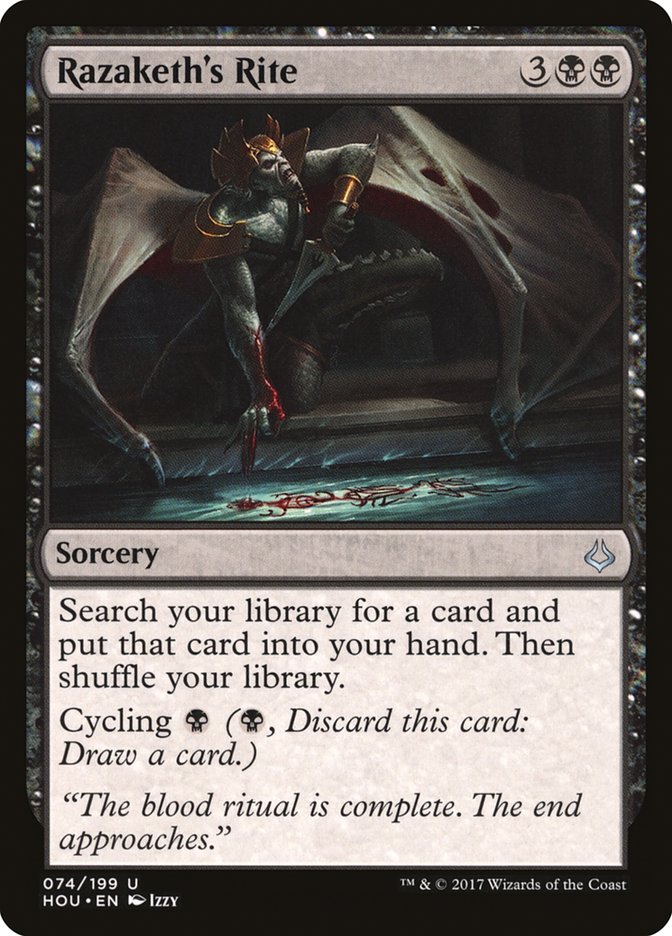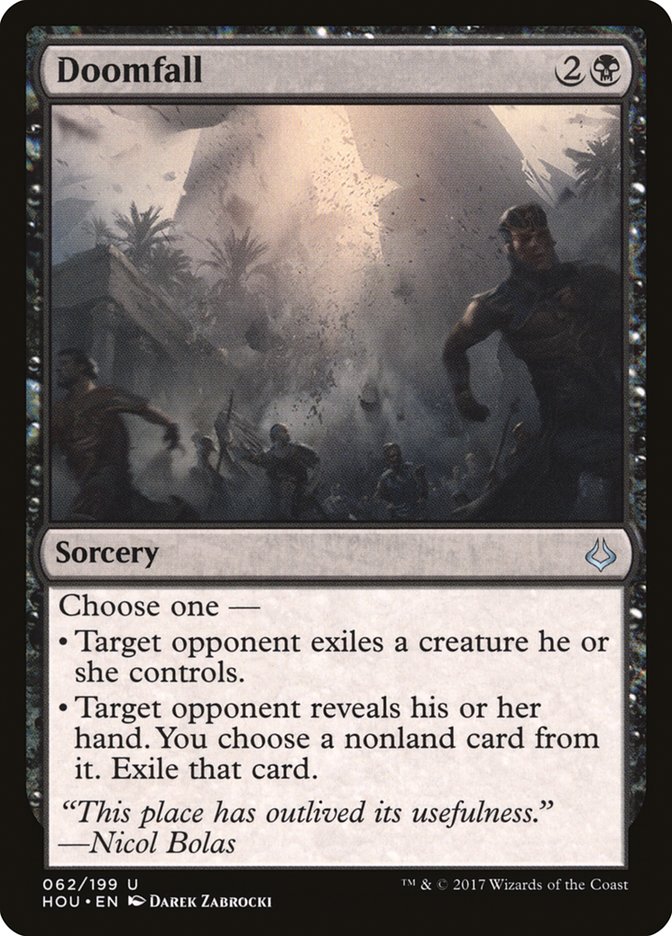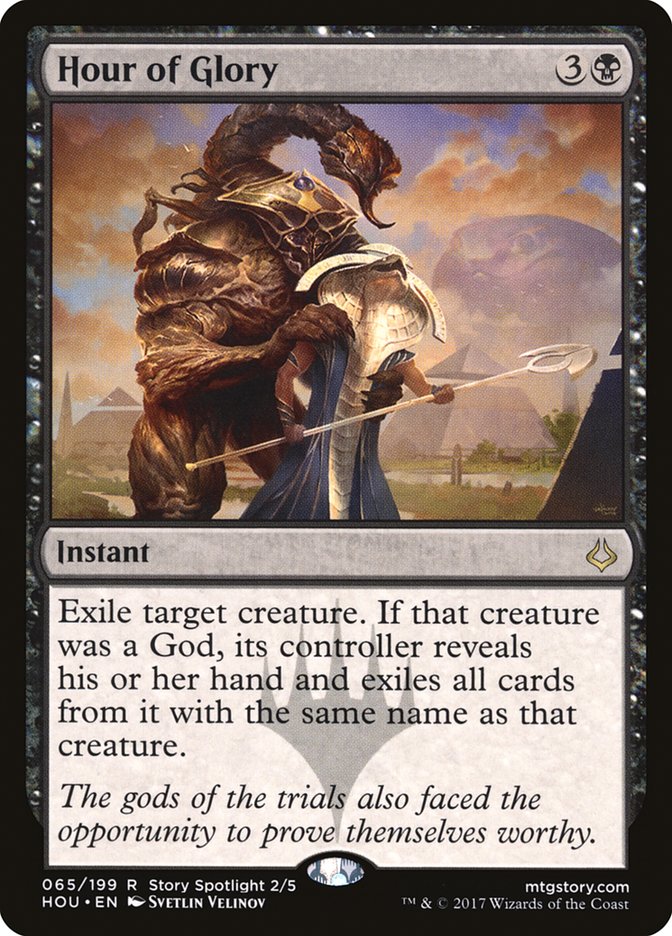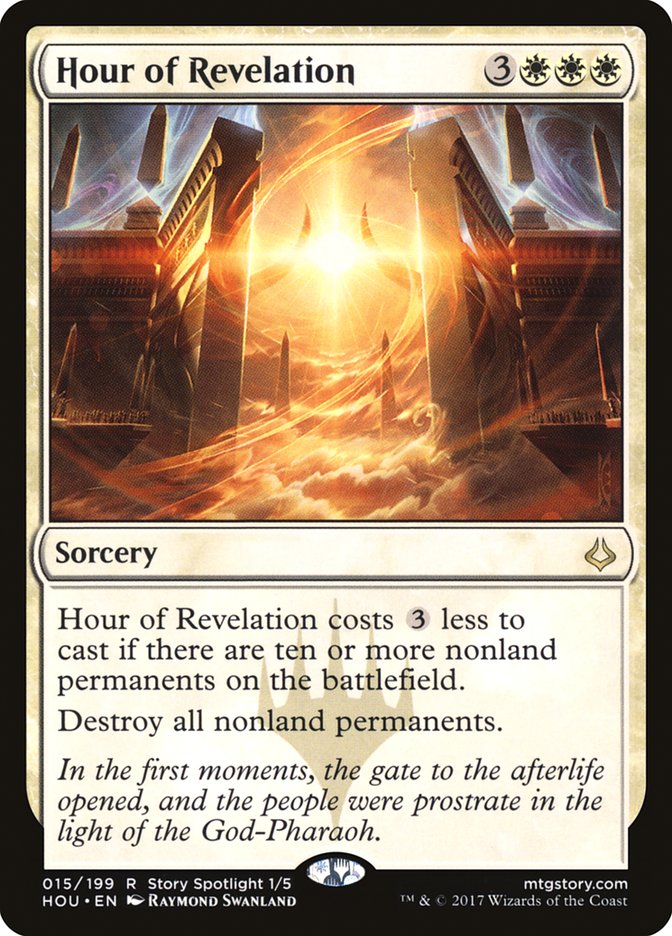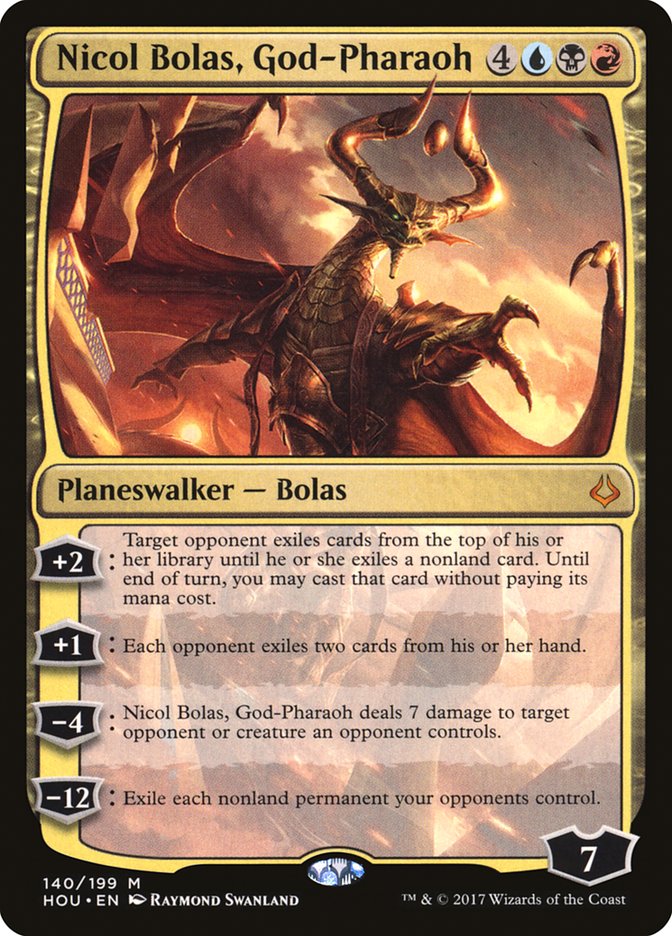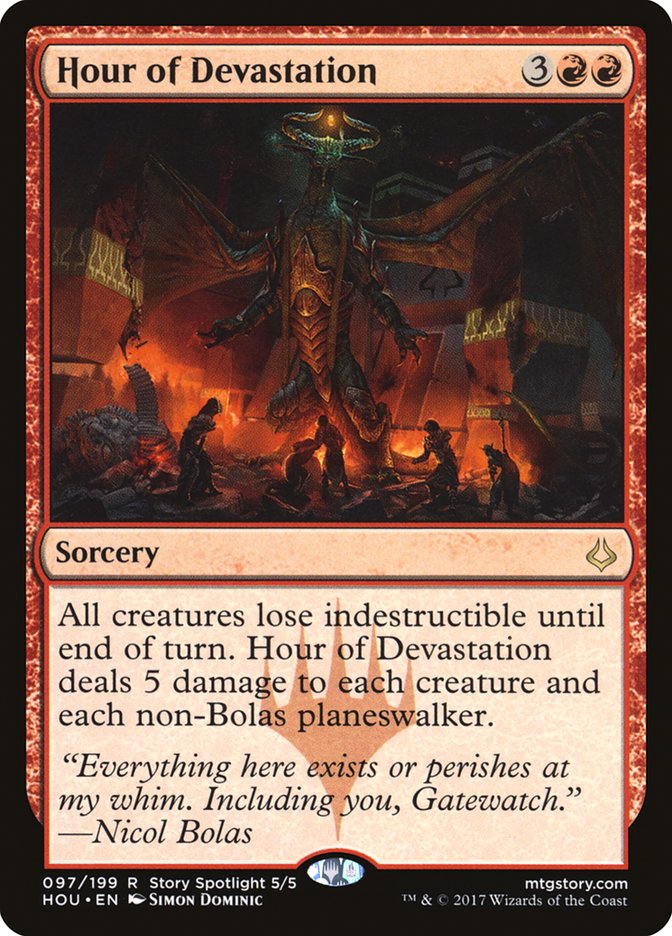Previews are what deckbuilders like me most look forward to. Standard has been under fire in the last six months with multiple bannings and some lower tournament turnout, but the format may be finally healthy. The only tournament to showcase the new Standard was the Season One Invitational in Roanoke, because Hour of Devastation is about to be released.
The full set has been revealed, so I immediately got to work, testing different combinations of cards for possible control decks I could select from at Pro Tour Hour of Devastation in Kyoto. I honestly thought that the only sweepers that control could choose from would be between Yahenni’s Expertise or Sweltering Suns, but that reality has been shattered with powerful alternatives.
The first things I look for when a new set is revealed are blue spells, because control just isn’t the same without the godfather of colors. Pull from Tomorrow is the future of control in Standard, so naturally a better support system would improve the chances of that being the breakout card for the Pro Tour. I was a bit dismayed when I saw that the best new cards are outside of blue, but I forgive R&D because of how good they are.
Building a control deck after Hour of Devastation is released is going to be tough, not because control is poorly positioned but due to the amount of options from non-traditional colors. The best removal is still in black, with Fatal Push and Grasp of Darkness leading the way. U/R Control has suffered greatly from its inability to deal with large creatures like Longtusk Cub and a crewed Heart of Kiran. Magma Spray and Harnessed Lightning need some help to manage the battlefield when things have gotten out of control.
Hour of Devastation has brought answers to U/R Control. White-based control is another victim of weak answers to a battlefield with diverse threats of Vehicles, creatures, and planeswalkers, but it has some new tools coming out that may save the day. I’d like to discuss the top ten cards from Hour of Devastation that can propel your control deck to the top.
#10
These two counterspells come in at number ten due to the mana costs. Three mana is a tough slot for countermagic in Standard because Disallow is so strong. These unpopular Standard tournaments have creatures to blame for them. Taking a quick look at the ban list will reveal a format afraid of overpowered Eldrazi, a poorly designed Vehicle, and a creature that has an ability that control mages would die for on a spell. Imagine a three-mana instant that returned a creature and prevented it from being played that turn! A card like that would be decent, but oddly R&D decided to put it on a creature that had to eventually get banned.
Counterspells like these have become the norm, and I doubt they’ll get much better. We got very lucky with an Essence Scatter reprint, so for now I think that I’d play a copy of Supreme Will in my control deck for the modality and save Countervailing Winds for a deck with Drake Haven.
#9
This is a very interesting card that I hope will see competitive play. The ability to reset your life total back to twenty for just three mana is too powerful to ignore. The drawback is severe, but the payoff is worth it against the decks that are forcing your hand. Stabilizing at a low, single-digit life total can easily result in a loss, and this card bails us out like no other.
Hate cards for aggressive decks have been mild for quite some time, and this is not another example of a mediocre answer. If red decks are on the rise in some way or aggro decks begin to dominate the format, Oketra’s Last Mercy is a solid card to equip sideboards with.
#8
Abrade is almost the Mardu answer that U/R Control has been looking for. Shatter has been missing from the format for some odd reason, so control decks have had to get creative in ways to deal with artifacts. With Oketra’s Monument on the rise and Heart of Kiran still alive and well, Abrade may see a lot of play from control mages who choose to dip into red as their support color.
The card falls a bit short with only having three damage as the other mode, which doesn’t kill many of the bigger threats in Standard. Even with that small downside, there are going to be Abrades in maindecks and sideboards from here on out.
#7
Many of the cyclers have very weak spells attached to them, but not this one. Diabolic Tutor saw play in control decks throughout the years, and this one may be even a bit better. It’s a no-brainer cycle early in the game but a fantastic topdeck in the late-game. Razaketh’s Rite is the card that I wanted to have in my cycling draft decks for the last few months, but I was stuck with Scarab’s Feast instead. Relevant spells that have cycling may be just what the doctor ordered when trying to make a Drake Haven / Archfiend of Ifnir deck operational in a competitive field.
#6
I am very excited for this card. Commit // Memory has been a bust in U/W, U/R, and U/B. The back half of Commit // Memory is close to uncastable, with only one match win at GP Montreal occurring because of it. That is close to one out of a hundred matches, so any replacement would be very welcome.
U/B Control historically struggles with resolved permanents that aren’t creatures or planeswalkers. Consign // Oblivion does the trick, removing permanents from the battlefield in the late-game and possibly forcing the opponent to discard them. Torrential Gearhulk has a very powerful interaction with the spell as well, nabbing cards out of an opponent’s hand at instant speed during the draw step. I see myself catching quite a few people off-guard soon with this card.
#5
Doomfall is another card with modes, but it hits opponents right where it hurts. There are many matches where a To the Slaughter effect would result in immediate victory, but then there are many matches where it’s close to a mulligan. Doomfall takes that risk out of the equation, acting as a Transgress the Mind or as an exiling Diabolic Edict. The exile attached to this card makes it very powerful, and there is no black-based control deck in my Standard future that doesn’t incorporate at least one copy in the maindeck.
#4
This card is like Doomfall, but it is an instant that is good all the time. Four mana is a high premium cost on a removal spell, but this is no ordinary Doom Blade. Hour of Glory exiles any reoccurring threat that control decks have struggled dealing with for the last year. Scrapheap Scrounger, Relentless Dead, and Dread Wanderer are the popular nuisances that come to mind, but there are many more juicy targets.
Hour of Glory is a clean answer to a Gideon, Ally of Zendikar when it attacks; an Ormendahl, Profane Prince that is cluttered with keywords; and any God that has been impossible to remove before. The bonus of removing all copies of a slain God is even more reason to use a few of these in every black-based control deck moving forward. The four-drop slot is relatively open if you are like me and use Hieroglyphic Illumination over Glimmer of Genius to avoid the clump of expensive spells in the hand. The mana cost of this card will make most skeptical; however, it is a piece to the control puzzle that has been missing for some time now.
#3
This was one of the earliest preview cards that we got to see, and I have been thinking of ways to use it ever since. We have waited far too long for a Planar Cleansing-style card to arrive to Standard. With the power level of creatures being raised and the sweepers/removal being dropped set after set, it is time to tap a lot of mana to clear the battlefield.
I wouldn’t use any planeswalkers in the maindeck of a white-based control deck after the release of Hour of Devastation, because this sweeper is much better than Fumigate. Even though Fumigate comes down a turn faster, it fails to deal with a multitude of threats that plague control. Hour of Revelation as the main control reset button will need a solid cast of characters that come before it, helping ensure survival up to that magic turn 6. This will present a dilemma to any opponent you have in the future. Playing around a six-mana Wrath of God effect is easy, but that line of play may cost them the game. Torrential Gearhulk and Hour of Revelation occur on the same turn but require different reactions by opponents entirely. This diversity may be exactly what control players need to succeed in a few weeks.
#2
The legend has arrived and it is glorious. Nicol Bolas, God-Pharaoh does everything any mage could dream of to a midrange or control opponent. Three of the modes will be commonly used to handle a variety of situations, which include controlling both the hand and battlefield. The ability to tick up a planeswalker to destroy someone’s hand has always been powerful in Standard. Liliana Vess, Karn Liberated, and Liliana of the Veil are a few examples of cards that saw play in control shells for the hand disruption aspect.
Those planeswalkers took one card out of an opponent’s hand, where Nicol Bolas, God-Pharaoh removes two. There are very few situations where I can see coming back from this resolved bomb, losing my hand, and trying desperately to deal with it through topdecks. Nicol Bolas, God-Pharaoh also removes any threat from the battlefield with a seven-damage blast. This includes planeswalkers, which helps the seven drop pass the Gideon, Ally of Zendikar check.
Sorin, Grim Nemesis bailed me out against Mardu quite a few times with its removal of opposing planeswalkers, and Nicol Bolas, God-Pharaoh can do the same thing for an additional mana. The final ability on this dynamic planeswalker helps reset the battlefield in a similar fashion to Hour of Revelation. There are many circumstances where I believe the game will come down to a player’s ability to defend this expensive planeswalker with spells of their own, as well as Nicol Bolas, God-Pharaoh’s first ability. That is the only mode I’m not too excited about, but it is still a powerful effect against the two archetypes that this card would be used against most effectively. I’m never a fan of randomness; however, this could prove to be much better than meets the eye. I love this planeswalker to death, and we need to hope that the card Negate doesn’t see a ton of play!
#1
It is fitting that the top card on my control list has the same name as the set itself. Hour of Devastation is the best battlefield sweeper we have had since Languish. For five mana, this card wipes out every relevant planeswalker, creature, and God that came before it. The catch is that it’s a very heavy red investment, but that won’t bother the U/R Control fans out there. I see myself trying to make the Grixis manabase work, lay off as many enters-the-battlefield-tapped lands as I can, and combine the forces of most of the cards listed here today. This card will see play across the spectrum and fix many of the holes that powerful creature and planeswalker printings have left in Standard.


